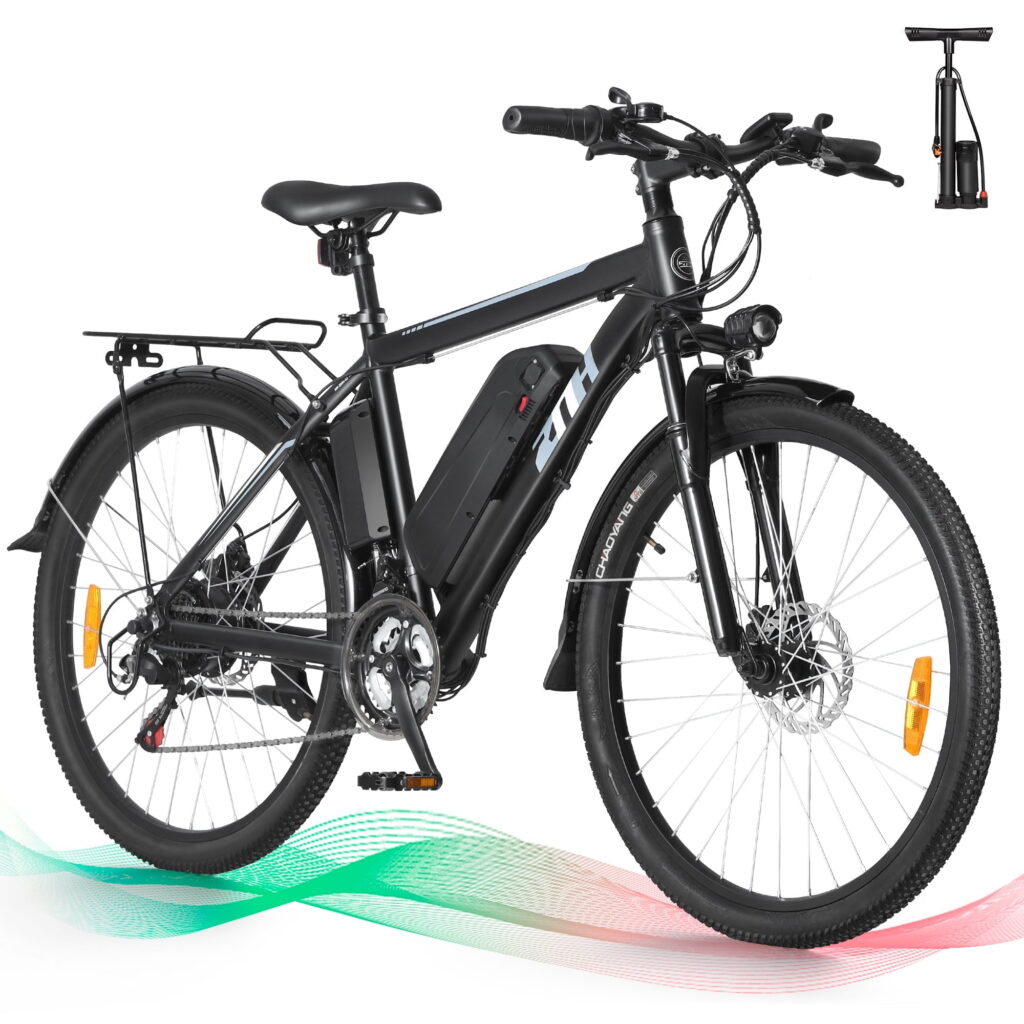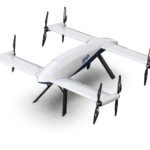Vehicles and public transit have become the primary modes of transportation for many daily commuters. However, bicycles have remained an option for some due to cost or lifestyle — and this choice is increasing. One reason is that there are more two-wheel choices than ever before. And specifically, motorized bicycles or e-bikes have gained much popularity.
E-bikes operate on rechargeable batteries and can reach 25 to 45 km speeds per hour. In congested traffic conditions, e-bikes offer a remarkable advantage, letting riders navigate through traffic and gridlock, thanks to their compact size and maneuverability. The range of travel on a single charge varies per model, with some e-bikes capable of covering distances of up to 160 km. Moreover, e-bikes are more sustainable, making them a “greener” transportation option.
In this article, we’ll explore the types of e-bikes available and their features. In terms of e-mobility, e-bikes stand out as a compact, affordable option for many.
What is an e-bike?
An e-bike, short for electric bike, has become a popular innovation in the bicycle industry, with a significant number of individuals either purchasing or assembling e-bikes themselves.
These bikes are equipped with an integrated electric motor that provides power assistance to the rider as needed to accelerate. They typically come with a rechargeable battery and offer two modes of operation: pedal-assist and electric-only.
In the pedal-assist mode, the electric motor complements the rider’s pedaling efforts. The level of assistance can be adjusted, allowing the rider to customize the support they desire from the motor. As the rider pedals, the motor automatically engages, resulting in a more energy-efficient and natural-feeling ride.
On the other hand, the electric-only or throttle-assist mode enables the motor to propel the bike without pedaling. It operates as the rider accelerates the throttle, providing a seamless and effortless riding experience.
The versatility and convenience offered by e-bikes make them an attractive choice for individuals seeking a new way to commute or an enhanced cycling experience.
Most e-bikes have 250~300-watt motors, but more advanced models offer 750-watt motors, which can easily achieve 45 to 55 km/hr speeds. In speed pedelec e-bikes, the assistance cuts off at a higher rate, making them ideal for longer commutes or conquering steep hills. However, regulations often restrict the power output of pedal-operated motors.
Electric-only bikes are limited to a speed of 25 km/hr, and their maximum power output is restricted to 200 watts.
E-bikes are available in various styles, from commuter to full-suspension mountain bikes. In 2023, more than 1.1 million e-bikes were imported in America, with five to six million e-bikes sold in Europe last year.
Why e-bike?
People are adopting e-bikes to help ease traffic burdens, become more active, and contribute to cleaner air because they’re more accessible and cost-effective than vehicles. Multiple factors are driving the increasing adoption of e-bikes.
E-bikes offer several advantages, including:
Sustainability: e-bikes emit no hazardous pollutants since they’re powered by electricity rather than gasoline. They’re also quiet and do not contribute to noise pollution.
Range and speed: today’s e-bikes can travel up to 25 km/hr in motor assistance mode. In speed pedelec e-bikes, the top speed is 55 km/hr (but they must be registered to do so). The maximum speed is typically authorized by government law. Overall, e-bikes can make commuting and recreational rides faster and more efficient.
Assisted pedaling: riders can cover longer distances without feeling fatigued. They’re also ideal for those with physical restrictions or who might find riding a conventional bicycle taxing.
Climbing: the ease of riding an e-bike when ascending hills or mountains is a significant benefit. Strong headwinds are also easier to face with an electric bike.
Commuting efficiency: e-bikes can navigate traffic more efficiently than traditional bicycles, making them a practical option for urban commuting. A lot of congestion faced by motorized vehicles can be avoided using e-bikes as they can take advantage of bike lanes and pathways.
Battery dependence: e-bikes use lithium-ion batteries with a charging current starting from 10A. As the motor capacity increases, the charging current, too. E-bikes charge on a portable charger that generally requires no specific charging infrastructure. Depending on the battery and charger, it can take three to eight to recharge fully. In a pedal-assisted bike, it’s possible to continue riding even if the battery is discharged. However, the throttle-assisted e-bikes depend entirely on the battery.
Health benefits: although e-bikes provide assistance, riders still engage in physical activity. E-biking can be a great way to exercise regularly, especially for individuals commuting daily.
Weight and size: the weight of an e-bike is more than that of a conventional bicycle, but lighter than any fuel-operated scooter or vehicle. Most e-bikes fall within the range of 20 to 30 kilograms. Some ultralight e-bikes, particularly road bikes with carbon-fiber frames, can weigh as little as 10 kilograms. Cargo bikes, folding bikes with heavy frames, and mountain bikes with full suspension systems can tip the scales at 40 kilograms or even more. The weight of an e-bike depends upon its motor size, battery capacity, frame material, and other accessories. These components help accelerate the ride, so the bike should not feel heavier than a typical bicycle.
Versatility: e-bikes can handle a variety of terrains, including hills and challenging landscapes, with ease. They are also suitable for riders, from beginners to experienced cyclists.
Cost savings: e-bikes are more expensive than traditional bikes but are almost negligible compared to any fuel-operated vehicle.
Maintenance: e-bikes are nearly maintenance-free. They require regular cleaning, and checks of the chain, motor, and the drive system may need lubrication. Repairs are fairly straightforward.
Licensing: is not required for a typical e-bike. However, riders must abide by vehicle legislation much like a standard bicycle. The speed pedelec e-bikes, however, must be registered.
Parking: e-bikes can be parked in designated bike racks, letting riders bypass certain parking challenges or fees faced by motorized vehicles.
Variety: e-bikes are available as city bikes, mountain bikes, folding bikes, road bikes, cargo and family bikes, and many other styles. The electric assistance adds to the experience for many riders, making cycling more accessible and fun.
Types of e-bikes
E-bikes are available in various designs, catering to different preferences, riding styles, and purposes. The most common types of e-bikes are as follows:
City/commuter e-bikes: designed for urban commuting and short-distance travel. They’re equipped with fenders, lights, and racks, supporting an upright riding position.
Mountain e-bikes (E-MTBs): built for off-roading and trail riding, these bikes have a reliable frame, heavy suspension system, knobby tires, and motor systems optimized for variable terrains.
Folding e-bikes: designed for easy storage and portability, suitable for commuting and travel. They have a compact, lightweight design with foldable frames.
Speed pedelecs: equipped with a heavy motor and large-capacity battery. These are designed for higher speeds and longer distances. The speed pedelecs can reach speeds higher than traditional e-bikes, typically with more powerful motors.
Road e-bikes: can travel long distances and are suitable for faster road cycling. These are lightweight, efficient, and often feature drop handlebars.
Cruiser e-bikes: built for a relaxed and comfortable ride, they’re often used for leisurely cruising. They have an upright seated position, wide handlebars, and a laid-back style.
Fat tire e-bikes: built for challenging terrains such as sand, snow, or mud. They have wide tires for improved traction, a stable frame, and enhanced shock absorption.
Hybrid e-bikes: versatile and suitable for commuting or recreational riding. They combine the characteristics of road and mountain bikes, providing a comfortable and adaptable ride.
Cargo e-bikes: made to carry heavy loads and are ideal for transporting goods or children. They have an extended frame and feature a sturdy cargo platform or container. Some cargo e-bikes come with multiple seats.
Electric trikes: for people who may have difficulty balancing on two wheels. They have three wheels for stability, feature a comfortable seat, and have cargo-carrying capabilities.
Conclusion
E-bikes are the electric avatars of bicycles. They’re compact, yet efficient, with the ability to accelerate faster than typical bikes, thanks to their electric motor. They come in two modes: pedal-assisted and throttle-assisted. There are pedal-assisted e-bikes with powerful motors and large batteries capable of topping 50 km/hr. These are speed pedelecs.
While e-bikes do not require any license or document, riding speed pedelecs must be registration. The e-bikes come in a variety of styles and offer several advantages over fuel-operated vehicles. These are the best alternative transport to adopt for cleaner, commute-efficient, healthy, and enjoyable travel.
You may also like:
Filed Under: Electric Vehicles, EV Engineering, Tech Articles






Questions related to this article?
👉Ask and discuss on Electro-Tech-Online.com and EDAboard.com forums.
Tell Us What You Think!!
You must be logged in to post a comment.